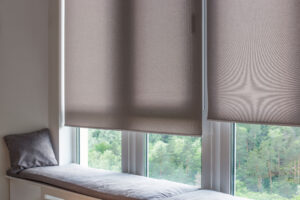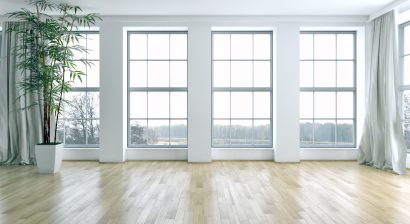Selecting the Perfect Window Treatment: A Complete Guide

Selecting the ideal window treatments is a significant task as they play a crucial role in defining the character of a room. It’s essential for them to complement the existing decor while serving as a focal point that imparts the desired ambiance, whether it’s warmth, coziness, or other specific feelings. Wondering how to make the right choice for your home? Explore our helpful tips below.
Choose the Window Treatment Type
First, pick the type of window treatment. Remember, they should be the embodiment of the environment you’re trying to create. Window treatments aren’t an afterthought but rather the pinnacle of the room. Do you want:
- Drapes – These are usually floor-length, heavy-duty, and provide a bit of formality for the room
- Curtains – A version of drapes, curtains are less formal and can be long or short, have a backing or be without
- Blinds – These don’t hang from a rod and can be slightly opened to filter in light without lifting them and are available in a variety of materials including wood and vinyl
- Shades – These cover the entire window and are made of fabric. You lower them to let light in and close them for privacy/security
Consider the Room’s Purpose
Evaluate the function of the room you are decorating. If it’s a formal space like a living room that doesn’t see frequent use, opt for formal drapes, preferably floor-length or even longer for a sophisticated touch. The drapes can elegantly pool on the floor, creating a formal ambiance. For rooms where you often bring in light, such as bedrooms or playrooms, consider lighter options like curtains. They can be easily pulled back to welcome sunlight during the day and drawn closed for privacy at night. To achieve a blend of formality and informality, consider combining sheer curtains with formal drapes. The sheer drapes allow natural light while the heavier ones provide a more formal look or occasional privacy when closed.
Don’t Overlook Blinds
Blinds can contribute to an aesthetically pleasing and formal appearance while offering control over light and shadows in the room. In certain situations, blinds may be the only viable option due to the home’s structure, such as slanted ceilings or closely grouped windows. With the diverse range of blinds available today, you can experiment with different materials to achieve the desired formality and look. Blinds are particularly suitable for rooms requiring complete privacy or effective light blocking. Similar to sheer curtains, blinds pair well with drapes or curtains, allowing flexibility in achieving the desired room aesthetic.
Establishing a Cohesive Look
Avoid selecting identical window treatments for every room, as each space likely has its unique personality and needs. However, if you prefer a cohesive appearance, consider choosing a playful window treatment, like wood blinds, and vary the style in each room. For instance, in a formal sitting room, incorporate floor-length drapes, while in a bedroom, opt for flowing curtains or leave them unlayered. Take into account the colors and ambiance of each room to determine the most fitting treatments. Additionally, consider the practical aspect – how frequently will you need to adjust the window treatments for light and privacy purposes?
Custom-made Vs. Off-the-shelf Window Treatments
Deciding between custom and ready-made options depends on your budget, window size, and desired look. Custom treatments allow for more personalized options and precise fitting, especially for windows with non-standard dimensions, but they usually come with a higher price tag. On the other hand, off-the-shelf options are more budget-friendly and quicker to install, but the options for customization are limited, and the fit may not be exact. Evaluate your specific needs and preferences against your available budget to make an informed decision.
Striking a Harmony Between Privacy and Sunlight
Achieving a delicate balance between privacy and natural light is crucial, particularly in spaces where both seclusion and daylight are valued. In these instances, contemplate options such as sheer curtains, permitting light to gently diffuse through while maintaining a barrier against external views. Alternatively, consider top-down, bottom-up shades, providing adaptable coverage to cater to your preferences. The combination of window treatments, such as blinds coupled with drapes, offers the flexibility to customize privacy and light levels, allowing you to adjust the ambiance according to your changing requirements throughout the day.
FAQs
1. What are the most popular types of window treatments?
Common window treatments include curtains, blinds, shades, and drapes. Each type offers unique features, styles, and functionalities to suit different preferences and needs.
2. How do I choose the right window treatment for my room?
Consider the room’s function, the amount of natural light desired, privacy needs, and the overall aesthetic. Factors such as color, fabric, and style should complement the room’s décor.
3. Can I mix different types of window treatments in one room?
Yes, layering window treatments can create a stylish and functional look. Combining blinds or shades with curtains or drapes adds versatility, allowing you to control light and privacy effectively.
4. What window treatments are best for maximizing natural light?
Sheer curtains, light-filtering shades, or top-down, bottom-up blinds are great options for allowing ample natural light into a room while maintaining privacy.





